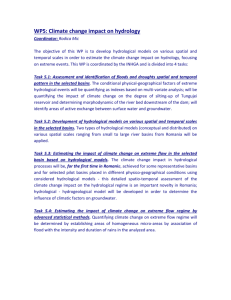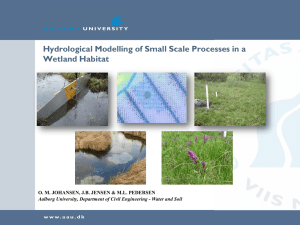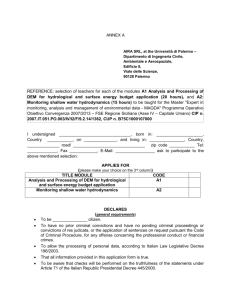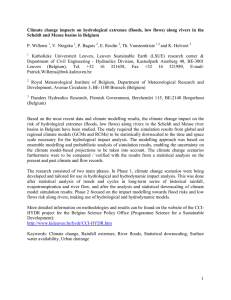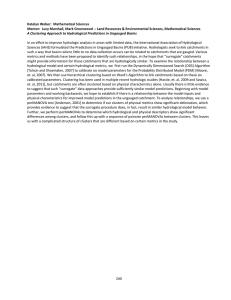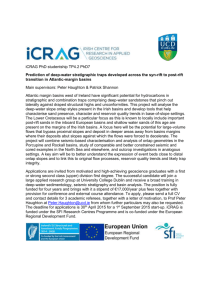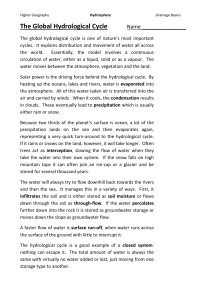Hydrological modelling of large African river basins D A Hughes
advertisement
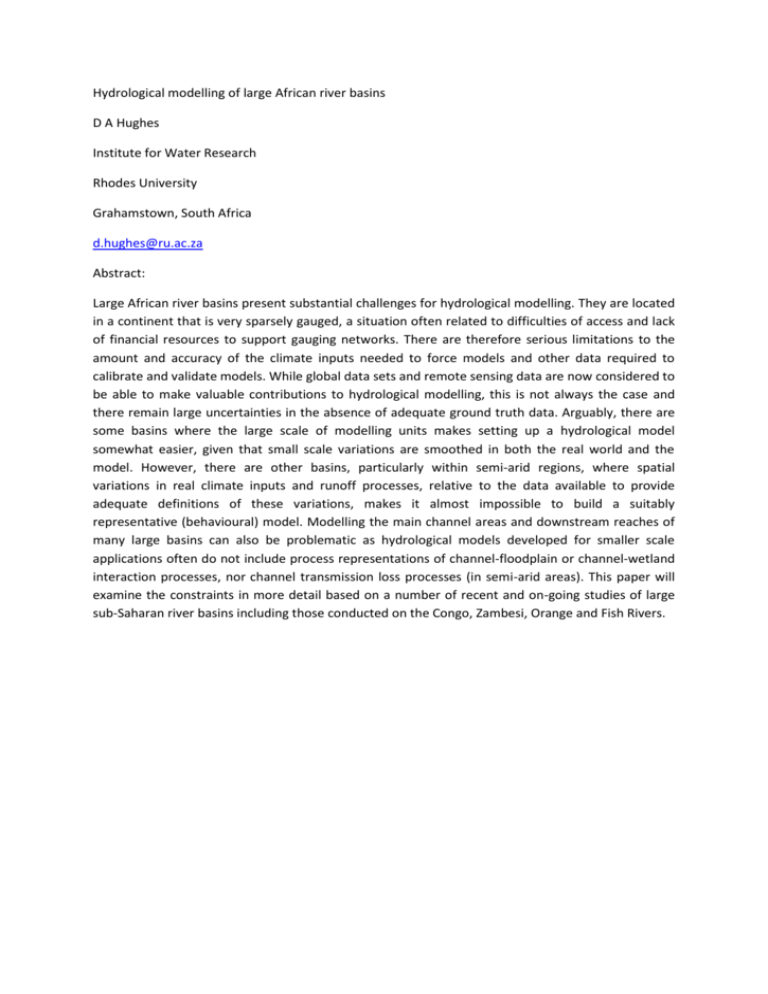
Hydrological modelling of large African river basins D A Hughes Institute for Water Research Rhodes University Grahamstown, South Africa d.hughes@ru.ac.za Abstract: Large African river basins present substantial challenges for hydrological modelling. They are located in a continent that is very sparsely gauged, a situation often related to difficulties of access and lack of financial resources to support gauging networks. There are therefore serious limitations to the amount and accuracy of the climate inputs needed to force models and other data required to calibrate and validate models. While global data sets and remote sensing data are now considered to be able to make valuable contributions to hydrological modelling, this is not always the case and there remain large uncertainties in the absence of adequate ground truth data. Arguably, there are some basins where the large scale of modelling units makes setting up a hydrological model somewhat easier, given that small scale variations are smoothed in both the real world and the model. However, there are other basins, particularly within semi-arid regions, where spatial variations in real climate inputs and runoff processes, relative to the data available to provide adequate definitions of these variations, makes it almost impossible to build a suitably representative (behavioural) model. Modelling the main channel areas and downstream reaches of many large basins can also be problematic as hydrological models developed for smaller scale applications often do not include process representations of channel-floodplain or channel-wetland interaction processes, nor channel transmission loss processes (in semi-arid areas). This paper will examine the constraints in more detail based on a number of recent and on-going studies of large sub-Saharan river basins including those conducted on the Congo, Zambesi, Orange and Fish Rivers.

